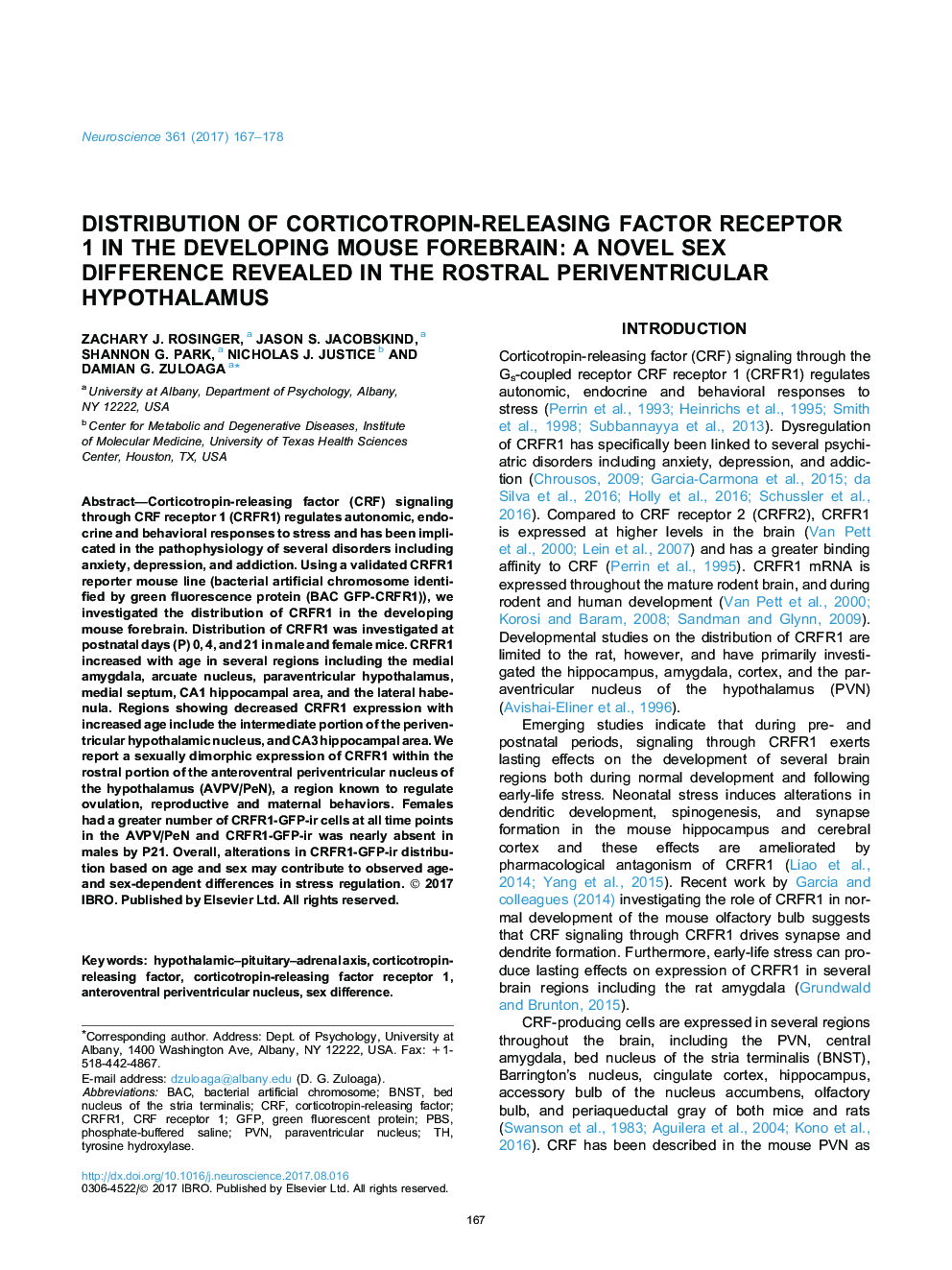| Article ID | Journal | Published Year | Pages | File Type |
|---|---|---|---|---|
| 5737385 | Neuroscience | 2017 | 12 Pages |
â¢Changes occur in corticotropin-releasing factor receptor 1 over mouse development.â¢Several hypothalamic nuclei differentially express this receptor over time.â¢Female mice have a unique nucleus of these receptors in the hypothalamus.â¢This nucleus may be involved in sex differences in stress reactivity.
Corticotropin-releasing factor (CRF) signaling through CRF receptor 1 (CRFR1) regulates autonomic, endocrine and behavioral responses to stress and has been implicated in the pathophysiology of several disorders including anxiety, depression, and addiction. Using a validated CRFR1 reporter mouse line (bacterial artificial chromosome identified by green fluorescence protein (BAC GFP-CRFR1)), we investigated the distribution of CRFR1 in the developing mouse forebrain. Distribution of CRFR1 was investigated at postnatal days (P) 0, 4, and 21 in male and female mice. CRFR1 increased with age in several regions including the medial amygdala, arcuate nucleus, paraventricular hypothalamus, medial septum, CA1 hippocampal area, and the lateral habenula. Regions showing decreased CRFR1 expression with increased age include the intermediate portion of the periventricular hypothalamic nucleus, and CA3 hippocampal area. We report a sexually dimorphic expression of CRFR1 within the rostral portion of the anteroventral periventricular nucleus of the hypothalamus (AVPV/PeN), a region known to regulate ovulation, reproductive and maternal behaviors. Females had a greater number of CRFR1-GFP-ir cells at all time points in the AVPV/PeN and CRFR1-GFP-ir was nearly absent in males by P21. Overall, alterations in CRFR1-GFP-ir distribution based on age and sex may contribute to observed age- and sex-dependent differences in stress regulation.
